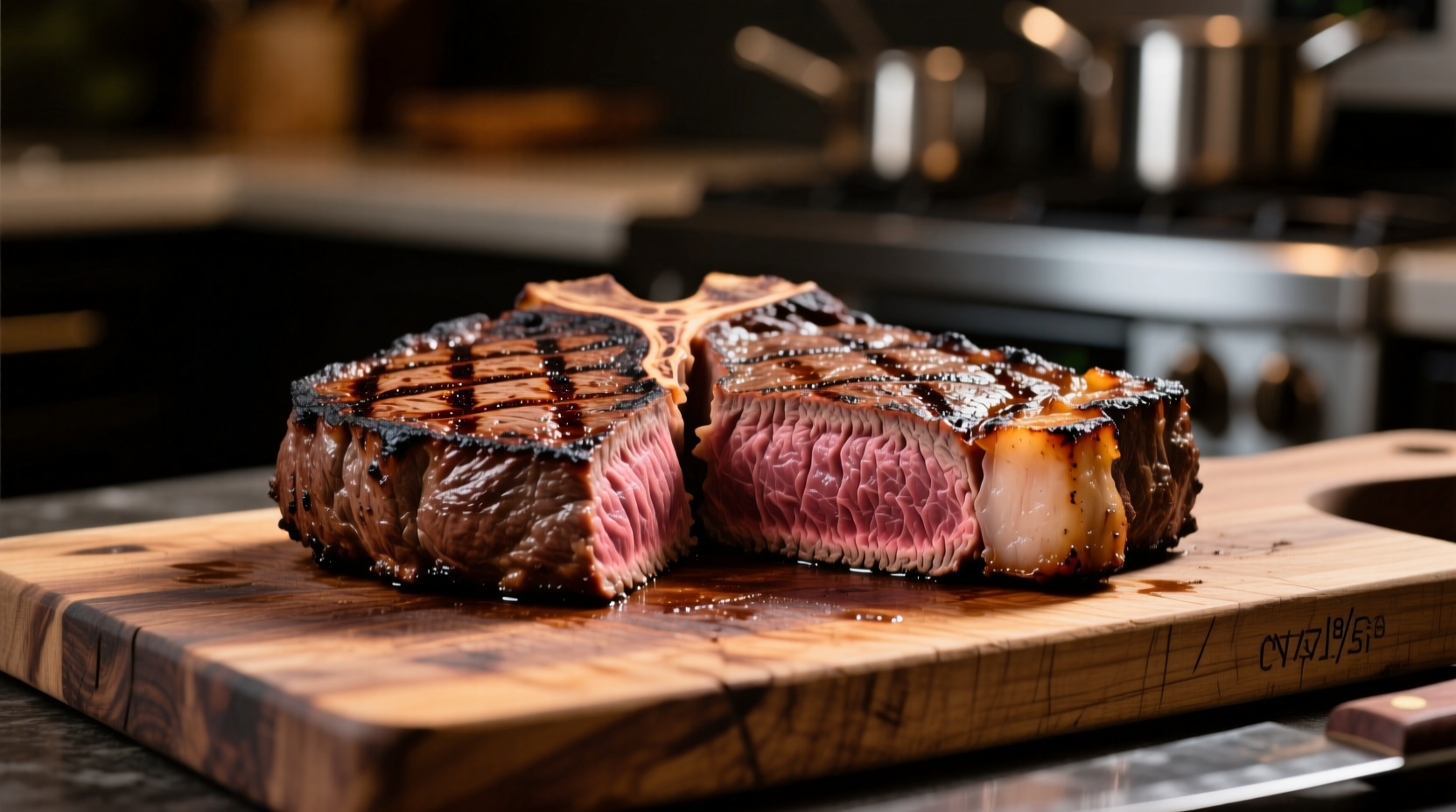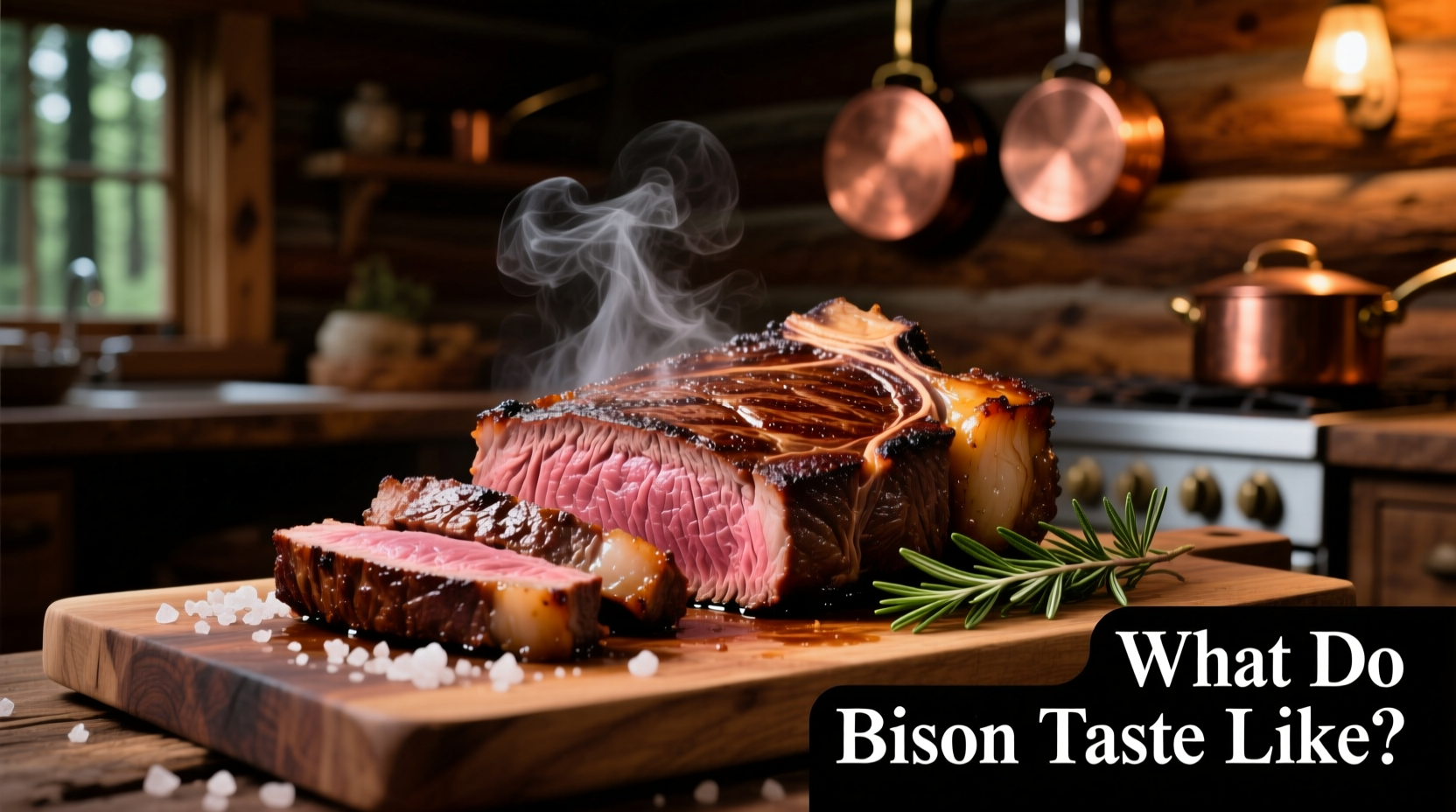The Real Taste Profile of Bison: Beyond the Myths
When you take your first bite of bison steak, you'll notice a clean, slightly sweet flavor with subtle earthy undertones. Unlike what many assume, bison doesn't taste "gamey" like wild deer or elk. Instead, it offers a refined beef-like experience with distinctive characteristics that set it apart from conventional beef.
How Bison Compares to Beef and Other Meats
Understanding bison's flavor requires context. This comparison table shows exactly how bison stacks up against familiar proteins:
| Characteristic | Bison | Beef (Grass-Fed) | Beef (Grain-Finished) | Wild Game (Venison) |
|---|---|---|---|---|
| Flavor Profile | Clean, slightly sweet, earthy notes | Bright, grassy notes | Richer, fattier taste | Strongly gamey, metallic |
| Fat Content | 2-4% (naturally lean) | 6-8% | 15-25% | 1-3% |
| Texture | Fine-grained, tender when properly cooked | Firmer texture | Softer, more marbled | Very lean, often tough |
| Cooking Temperature | 130-140°F (medium-rare max) | 135-145°F | 140-150°F | 125-135°F |
| Iron Content | 28% DV per 3oz | 15% DV per 3oz | 10% DV per 3oz | 20% DV per 3oz |
This USDA nutritional data (FoodData Central) confirms bison's leaner composition directly impacts its cooking behavior and flavor profile compared to conventional beef.
Why Bison Tastes Different: The Science Behind the Flavor
Bison's distinctive taste comes from three key factors:
1. Natural Grass-Fed Diet
Unlike most commercial beef cattle, bison primarily consume native grasses throughout their lives. The National Bison Association confirms that 95% of commercially raised bison are 100% grass-fed (National Bison Association). This natural diet creates subtle flavor compounds that give bison its characteristic sweetness without artificial additives.
2. Lower Fat Composition
With only 2-4% fat content compared to 15-25% in grain-finished beef, bison delivers a cleaner taste experience. The fat it does contain has a higher proportion of omega-3 fatty acids, contributing to its less greasy mouthfeel. This lean composition means bison cooks faster and requires different techniques to maintain tenderness.
3. Genetic Differences
Centuries of natural selection have given bison a unique muscle fiber structure. University of Nebraska research shows bison meat contains finer muscle fibers than beef, resulting in a more delicate texture when properly prepared (University of Nebraska Food Science Department).

Cooking Bison: Preserving Flavor and Tenderness
Mistakes in cooking cause most negative bison experiences. Follow these science-backed techniques:
Temperature Control Is Critical
Bison's low fat content means it reaches optimal tenderness at lower temperatures than beef. Cooking beyond 140°F causes rapid moisture loss. Use a digital thermometer and remove bison from heat at 125-130°F for perfect medium-rare results after resting.
Marinating Guidelines
Unlike beef, bison benefits from shorter marinating times. Acidic ingredients can break down the lean muscle fibers too quickly. Limit marinating to 2-4 hours maximum with olive oil-based marinades containing herbs like rosemary or thyme.
Cutting Against the Grain
Bison's fine muscle structure requires careful slicing. Always cut perpendicular to the muscle fibers, especially for roasts and larger cuts. This technique prevents toughness and maximizes tenderness in every bite.
Where Bison Flavor Shines: Best Cuts and Preparation Methods
Certain cuts and cooking methods highlight bison's unique qualities:
- Tenderloin and Ribeye: Best for quick-searing methods that preserve natural juices
- Chuck Roast: Ideal for slow cooking with added moisture (braising)
- Ground Bison: Perfect for burgers with 15-20% added moisture (like Worcestershire sauce)
- Short Ribs: Respond well to low-and-slow cooking methods
Avoiding Common Bison Taste Mistakes
Many negative experiences with bison stem from improper handling:
Overcooking
This is the #1 mistake. Bison's lower fat content means it cooks approximately 25% faster than beef. A medium-rare bison steak requires 2-3 minutes less per side than beef.
Using High-Heat Methods for Lean Cuts
Thin cuts like bison sirloin work better with medium heat rather than high-heat searing. The lack of protective fat makes them prone to drying out with intense heat.
Skipping the Rest Period
Allow bison to rest for 5-7 minutes after cooking. This critical step lets juices redistribute throughout the meat, preventing dryness when sliced.
Buying Quality Bison: What to Look For
Not all bison is created equal. Follow these guidelines for the best flavor experience:
- Choose products labeled "100% grass-fed" for authentic flavor
- Look for "natural" or "no hormones added" certifications
- Fresh bison should have deep red color, not brownish tones
- Purchase from reputable sources like the National Bison Association members
- Avoid frozen bison that shows ice crystals (indicates freezer burn)
Why Modern Bison Tastes Better Than Historical Accounts
Early explorers described bison as tough and gamey, but today's farmed bison offers dramatically improved quality. This evolution timeline explains why:
- Pre-1800s: Wild bison hunted on open plains, often older animals with developed muscle
- 1800-1900: Mass slaughter led to stressed, lean animals with inconsistent diets
- 1900-1990: Limited farming with improper feeding practices
- 1990-Present: Modern bison industry focuses on proper handling, stress reduction, and natural diets
According to the National Bison Association, current farming practices prioritize animal welfare and natural behaviors, directly improving meat quality and flavor consistency.
Does Bison Taste Gamey? Debunking the Myth
The persistent myth that bison tastes "gamey" stems from confusion with wild game animals. Properly raised bison has none of the strong, metallic flavors associated with venison or elk. Its flavor profile is much closer to high-quality beef, with subtle earthy notes that many describe as "cleaner" and "sweeter."
Food science research from Colorado State University confirms that farmed bison's flavor compounds more closely resemble beef than wild game (CSU Animal Sciences Department). The key difference is bison's lower fat content, which affects cooking technique but not inherent flavor.
Final Verdict: What to Expect From Your First Bison Experience
When properly prepared, bison delivers a sophisticated eating experience that combines the familiarity of beef with distinctive qualities all its own. Expect a clean, slightly sweet flavor with subtle earthy notes, tender texture when cooked to proper temperature, and a satisfying richness without greasiness. The higher iron content gives a pleasant mineral undertone that enhances rather than overwhelms the overall flavor profile.
Unlike what many fear, bison doesn't taste "wild" or "gamey"—it offers a refined, clean alternative to conventional beef that appeals to both meat enthusiasts and health-conscious eaters alike.











 浙公网安备
33010002000092号
浙公网安备
33010002000092号 浙B2-20120091-4
浙B2-20120091-4